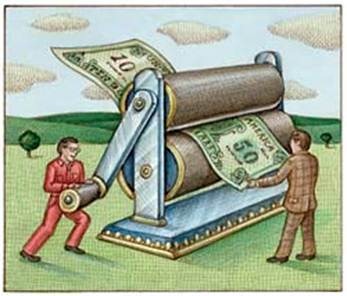There is one good news and one bad news! Of course, the good news first – the growth engine of the world, the United States, is recovering with a surge in exports to their highest level in 2 years helping it narrow their trade deficit. And, the bad news being that US recovery might not go down as all too well for Indian economy on various fronts.
At first, a round-up as to what is fuelling the on-going spate of optimism in the US economy. The economists have predicted that the US economy will grow at over 3.2% annual rate in each quarter this year. Further, the Wall Street Journal anticipates that the US economy has transitioned from being supported by the stimulus to gaining steam in reaction to domestic demand and rising exports.

Moreover, the US trade deficit for the month of November shrank to $38.3 billion, its lowest level since January, on the back of rebound in global demand and a weaker dollar that boosted overseas sales. American president Obama targets to double exports by 2015 to bring back the economy back on track from the severe recession.
All of this suggests that investors are finally getting their risk appetites back and raising their equity holdings to a 10-month high and increasing exposure to high yield credits as the US economy shows signs of swifter economic recovery.
How the US Growth Hampers Indian Economic Prospects?
Post Global Recession 2008, India has been the beneficiary of capital inflows seeking markets with strong underlying growth prospects. This was, especially, true when the US economy was reeling under the pressures of severe slowdown led by their realty sector. Needless to say, a chunk of the European economy is still under pressure from high sovereign debts in select countries.
As America comes out ahead in 2011, the emerging economies like India and China are busy grappling with high inflation and soaring food prices. Some of this pricing pressure is said to have been fuelled by the “money printing” measures (QE2) in the US aimed at increasing the supply of money into the system; which necessarily leads to inflating global commodity prices mired by concerns of supply constraints.
Moreover, on the back of healthy growth prospects and tax-cut compromise that the US government passed last month is likely to strengthen the case for investors on being over-weight on US shares in their portfolios.
Further, the deteriorating prospects of the Indian economy – mired by economically costly run-up in inflation and sagging industrial output data at an 18-month low of 2.7% in November – is likely to prompt foreign funds to cut back on their India exposure in 2011.
That’s not all. The fact that Asian region has grown phenomenally and the US recovery is gaining traction has driven crude oil prices higher at over $90 per barrel in international markets. Additionally, larger than expected drop in crude stock-piles in the US Energy Department’s weekly inventory further adds to the woes.
India’s crude oil import basket has been rising in line with global prices, which is at a 2-year high on a weakening dollar. This leads to a worrisome situation for the domestic OMCs that are mired by prospects of lower realizations as domestic crude prices remain non – aligned with international prices.
So, what should India wish for? – Recovery or Stagnation of the US economy?

Nice find about “Increase in US Exports” Viral,
How ever I beg to differ in point of view.
Normally, for any country, the rise in exports means many positive things to the country and for the globe. Increase in exports means,
1) narrowing of trade balance and consequently some relief to the govt,
2) increase in production which means more jobs,
3) by inreasing exports of products which the world needs, the country is reducing the imbalance in supply of those materials.
As is well known, US does not follow laws of nature.
Now lets see how my views differ with that of Viral’s.
Everybody knows very well that the major US exports are related to military products. They supply weapons to both parties of a conflict, be it two countries like Iran-Iraq or govt and rebels like Angola, Congo or to countries which lack courage like gulf countries.
Weapons exports form major part of US exports. Cars comes next. Both of which do not bring productivity to importing nations. On the other hand consider increase in export of iron ore from India to China. It brings prosparity to both nations. It brings dollars to India and raw material to China to work on providing more jobs.
Yes, more orders for weapons bring more jobs in US but brings distruction in other parts of the world.
Now increase in US exports indicates more bad news for world.
I agree that the whole world is dependednt on US economy and recovery in US economy brings positives for the whole globe. That SPECIFICALLY MEANS INCREASE IN US IMPORTS. When US imports grow we all know that US is consuming more and which in turn means they have the means to buy more from outside.
Where as the US exports means only one thing to the globe. More bad, disturbing news.
Altaf,
Agreed with you. But, from your reading it seems even you’ve not favoured prosperity or increased exports of the US. And, that coincides with my view that the US prosperity might not go all that well for India, though from a different angle with your take on it.
Nice to know the other side of the story as well.
Why we are so much dependent on USA ??
Despite of having a finance expert as a Prime Minister , we still don’t have a solid policy of long term to change things.
India should wish to become “growth engine of the world”.